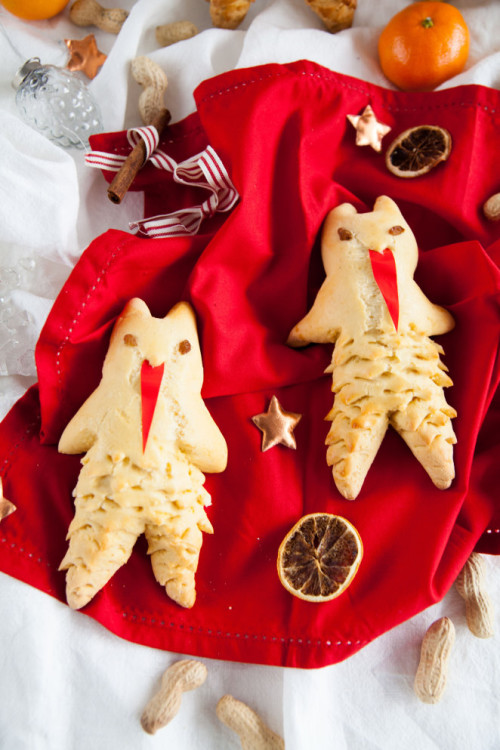Krampus for St. Nicholas
Have you been good this year? At least some of the time? Then you're getting a little goody-bag for St. Nicholas Day!
And since "stubborn, sassy and grumpy" can be exhausting as well, the less goody-two-shoe among you will get a horde of Brioche-Krampus snacks. They're really way too delicious to be given out as any kind of punishment but are an ideal gift for St. Nicholas and pre-Christmas celebrations. So start your ovens early...
St. Nicholas, Santa Claus, Father Christmas...
… the jolly old man in the red outfit has many names and appears in many stories. According to historical sources, Saint Nicholas (Nikolaos of Myra) was born around 270/280 AD in Patara, Lycia (Asia Minor) and died on the 6th of December 343 AD in Myra. He is one of the Eastern and Latin churches' most notable saints. The 6th of December is celebrated the world over as a day of remembrance in his honour.
The benevolent bishop served as a role model for all subsequently created Fathers Christmas.
Named Sinterklaas in Holland, Père Noël in France, Samichlaus in Switzerland and Julenissen in Norway, he appears every year not only with Krampus or Santa's Little Helper, but also with und „Zwarte Piet“ (NL), Père Fouettard (F) and Schmutzli (CH). His means of transportation also vary: he comes by sled, carriage, train, boat, on horseback, on a mule, a pony and sometimes even on foot across roofs, through chimneys and doors into the houses of well-behaved children.
The true home of St. Nicholas or Santa Claus however is Finland, a fact that every single Finnish child is aware of. There, he is called Joulupukki and he lives on the mountain of Korvatunturi together with his wife and a load of very busy elves, who make and wrap presents all year long.
And then there are the Icelandic trolls, imps and elves - they also wear red caps and pack little presents into the boots of children all over the country.
Last but not least there's Santa Claus - in Britain and the US: he's basically a movie star, but without the star behaviour. He flies across the sky in a sled filled with presents, pulled by his reindeer Rudolph (Rudi), Dancer, Dasher, Vixen, Prancer, Donder, Blitzen, Cupid and Comet.
Krampus and Santa's Little Helper, Schmutzli andZwarte Piet …
St. Nicholas brings presents for a LOT of well-behaved children, so clearly he needs help in the form of helpers, elves, imps or really fast reindeer. In the Eastern Alpine area however, all over Austria, Bavaria, Switzerland and the South Tyrol as well as Hungary, Slovenia and Croatia, there is the horror figure of Krampus, walking alongside St. Nicholas and punishing the naughty children by beating them with birch branches or a whip and stuffing them into the sack of coals he carries on his back. But nowadays, he's not quite as frightening as he used to be - the children even laugh at him now! And if he's made of dough or marzipan, he brings joy instead of fear.
The lovely Zola of Zola Auböck Tortenmanufaktur didn't just bake this heavenly Wiener-Brioche-Striezel for me last week but also created these amazing Krampus cookies. The recipe is the same.
Brioche Krampus cookies
Ingredients:
- 150g gluten-free flour from Schär (Brotmix B) or regular white flour
- 50g sugar
- 30g butter
- 100ml milk
- 1 egg (warmed to room temperature)
- 1 egg yolk
- 8g yeast
- a little lemon zest
- salt
- rum and vanilla
- one egg for the coat
Preparation:
- Warm up the milk with the butter until the latter has completely melted. Then mix all the ingredients in a big bowl and knead them to a smooth, springy dough (with dough hooks, if using a handmixer or food processor, your best bet). If the dough is too sticky, add more flour.
- Leave to rise for around 30 minutes.
- Preheat the oven to around 180°C (upper/lower heat).
- Re-knead the dough, divide into portions and form Krampus figures. Stick in the oven and bake until golden.
This might all be a little complicated. I found a really good video with easy instructions hier.
Notes:
* gluten-free flour is a little different to regular flour and it's possible that in any given instance, you'll need either less or more flour than indicated in the recipe.










